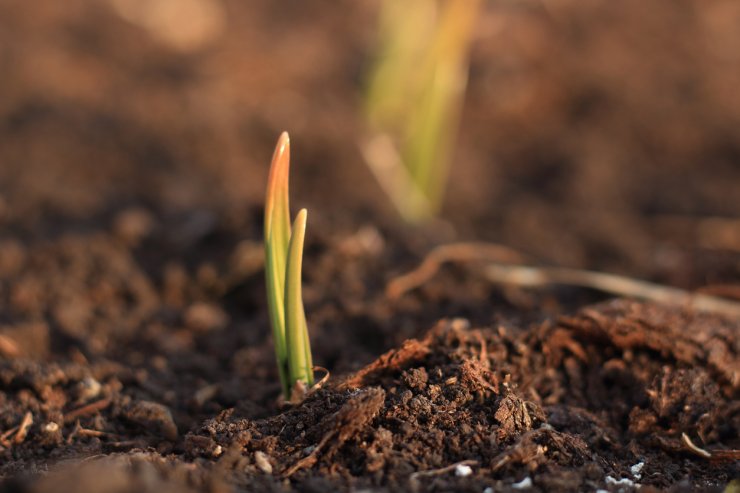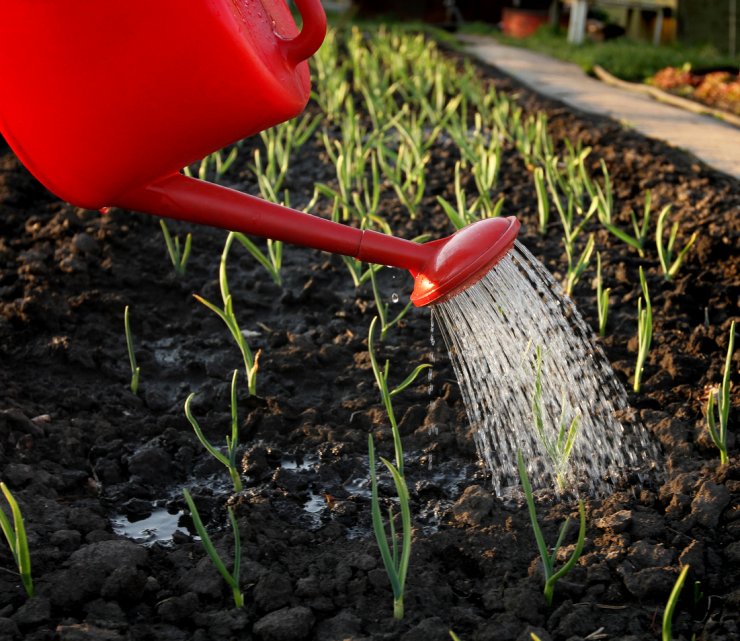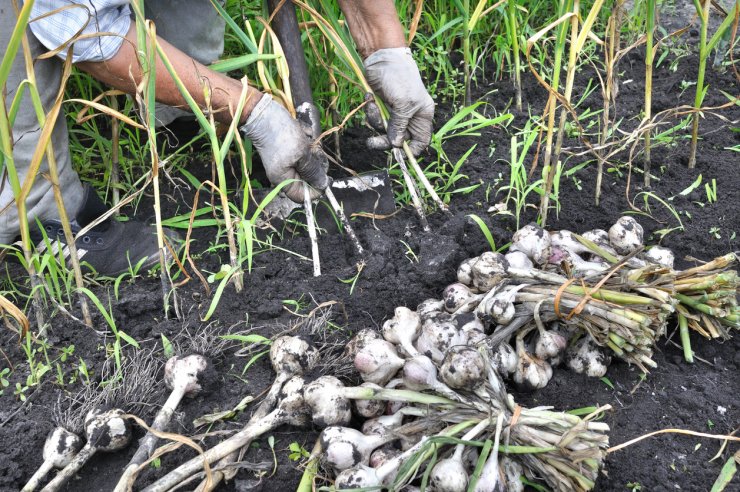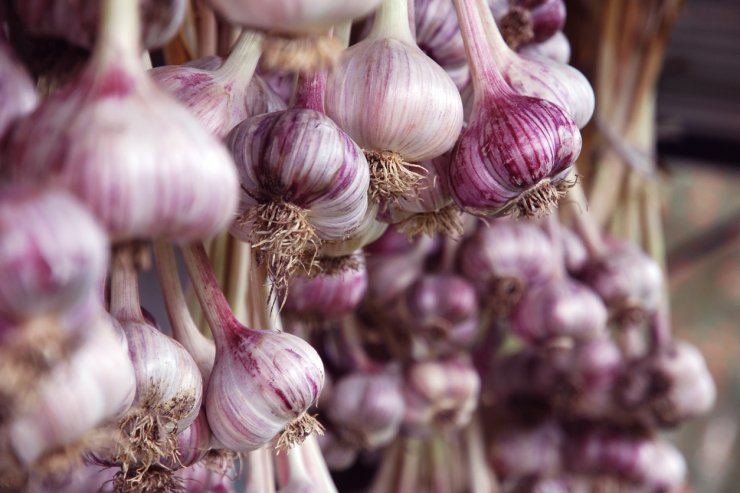
Garlic seedling growing in fertilized soil
Nitrogen-rich fertilizers are best for garlic, so choose an organic fertilizer such as bloodmeal, chicken manure, or a synthetic fertilizer that’s high in nitrogen.
We recommend getting your soil tested to see which nutrients your soil is lacking. Check with your local university or garden extension agency for testing resources and affordable testing services.

Watering garlic
Watering Your Crop
One of the great things about growing garlic is that it doesn’t need a lot of water. If you have sandy soil, your plants will tend to dry out a bit, so water deeply once a week. Loamy, well-amended soil should need water every ten days or so.

Harvesting garlic
Harvesting Garlic
The leaves tell the story of garlic readiness. If you wait until they’re brown, the garlic bulbs will likely be over-ripe and the cloves will start to separate from each other. A good bulb is tight and heavy for its size.
Most garlic growers advise harvesting garlic when the lower leaves are brown but the upper leaves are still green. In Northern climates, this might be in late July or early August. In Southern climates, it’s common to harvest garlic in June.
But the weather really plays a part in when garlic is ready for harvest; if you’ve had a hotter summer than normal, you’ll be ready to harvest earlier, and vice versa. So, keep an eye on those leaves for signs that it’s time to harvest your garlic.

Digging garlic out of the ground
Dig It!
It’s best to dig garlic instead of pulling it out by the plant. However, fresh garlic bruises easily, so be careful when you dig it out. Insert your pitchfork, shovel, or trowel about three inches from the garlic bulb and gently dislodge the plant from the soil.
You can loosen several plants and then pick them up, but don’t leave the bulbs in the sun for long or they may burn. Freshly harvested garlic is tender and not used to the heat of the sun.

Curing garlic
Curing Your Garlic
Curing simply means letting your garlic dry out for a short time, usually two to four weeks. Curing is especially important to avoid rot if you plan to store your bulbs for an extended period, such as over the winter.
After harvesting, brush the dirt off the plants—don’t rinse them in water—and cut off the roots (they can absorb moisture and cause rotting). Place the plants in a cool, dry area away from the sun; you can lay them on a table or hang them to cure. You’ll know your garlic is fully cured when the stem dries out and the wrappings are papery. Cut the stems to about an inch at this point, and you can store your garlic in a cool, dark place for months. Be aware that softneck garlic stores longer than most hardneck varieties; check out the Plant Profiles section for more details on this.
How vibrant is your garlic garden? What type of fertilizer do you use for your garlic plants? Do you have any special tips to share about harvesting garlic? Please tell us in the comments below.


 Previous
Previous

